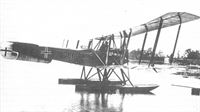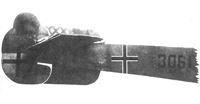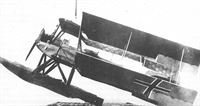
| Самолеты (сортировка по:) | |||||
| Страна | Конструктор | Название | Год | Фото | Текст |
Friedrichshafen FF64

|
Страна: Германия Год: 1918
|
| Friedrichshafen - FF63 - 1918 - Германия | <– | –> | Friedrichshafen - FF67 - 1918 - Германия |
 |
J.Herris - Friedrichshafen Aircraft of WWI /Centennial Perspective/ (21) |
| The prototype FF64 front view shows careful construction and streamlining for its time. |
 |
J.Herris - Friedrichshafen Aircraft of WWI /Centennial Perspective/ (21) |
| This is believed to be the first version of the prototype FF64 tail design with no fin on top of the fuselage. |
 |
J.Herris - Friedrichshafen Aircraft of WWI /Centennial Perspective/ (21) |
| The FF64 was designed to carry a flexible machinegun and wireless to lead a commerce raider to target ships. The tail design seems to have been influenced by Brandenburg designs to give the observer a wide field of fire. |
 |
J.Herris - Friedrichshafen Aircraft of WWI /Centennial Perspective/ (21) |
| Believed to be the second configuration of the prototype FF64; the tail has an upper fin and the lower fin has been shortened. Marine Number 3061 may have been the only aircraft completed of the three ordered. |
 |
J.Herris - Friedrichshafen Aircraft of WWI /Centennial Perspective/ (21) |
| This image of FF64 #3061 front view shows an alternative tail design, with both the rudder and fixed vertical stabilizer surfaces modified from the surfaces shown in the other photos. This is believed to be the third variation tested. |
 |
Журнал - Flight за 1919 г. |
| F.F. 64 |
 |
Журнал - Flight за 1919 г. |
| F.F. 64 |
 |
J.Herris - Friedrichshafen Aircraft of WWI /Centennial Perspective/ (21) |
| The FF64 demonstrating its ability to fold its wings for compact shipboard storage, which required additional wing bracing. The ability to quickly launch the aircraft from storage was a key design requirement. |
 |
J.Herris - Friedrichshafen Aircraft of WWI /Centennial Perspective/ (21) |
| Third version of the (see rudder) FF64 demonstrating its ability to fold its wings for compact shipboard storage. With wings folded the FF64 would fit into a standard cargo hatch. |